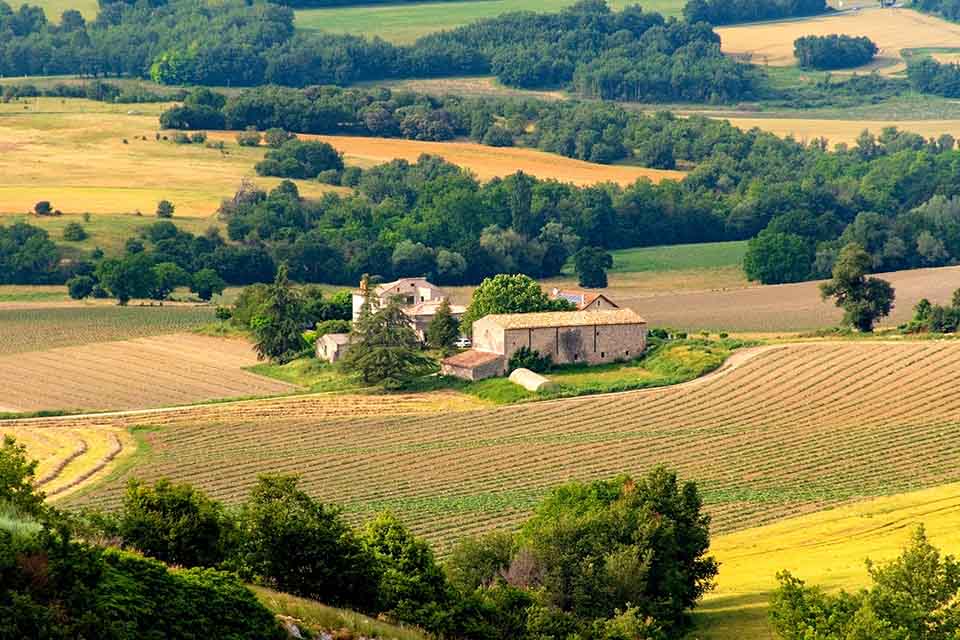
Back in The Old Days, I would often head down to the South of France for a summer break. I preferred to amble, and stop at various places on the way. Besides, my white Triumph 2500 PI preferred ambling to racing, for it was already getting on in years. The “PI” stood for “petrol injection” which must have seemed a good idea when the car was being designed but the system invariably went wrong. The injectors once conked out when I was in the middle of Paris, but I shall spare you the tiresome details. At least, my Triumph could out-run the local Citroën deux chevaux, which could only potter along at a stately 65mph even with a prevailing wind.
At the time, you had to fit yellow plastic filters over the car’s headlights, to comply with an eccentric French law dating back to 1937. France was the only country in Europe in which all vehicles had yellow headlights. If in your haste to depart, you managed to forget the filters, you could be sure to encounter the displeasure of some plodding country gendarme. The yellow headlights law remained until 1993 when the European Union told the French to stop being so silly and get in line with everyone else.
My route to the South remained pretty much the same. After crossing the Channel and driving through the drab streets of Calais, I would head east to the evocatively named l’Autoroute du Soleil (“The Motorway of the Sun”) then to Paris for a day or so; down through Beaune and Lyon and on to Valence and Avignon. After Avignon, ever so gradually, the colour of the light began to change. It’s easy to understand why the vibrant colours of the region attracted painters like Braque, Cézanne, Matisse and Picasso. Even the grey stone walls seemed to have richer tones than those of the north. Assuming that the petrol injectors didn’t give up en route, my destination was usually Provence. The name alone always brought images of olive groves, cypress trees, fields of lavender and the lovely Camargue with its small wild horses. And of course, the region is famous for the southern wines, which have been made there for over 2,600 years.
In France, more than twenty percent of wine sold is rosé. A study once revealed that while red wine is the preferred beverage with meals, rosé has become more popular as an apéritifs or casual drink. And incidentally, it is considered appropriate to pronounce the word rosé in the French manner, so that it sounds roughly like “roh-ZAY”.
There are different ways of making rosé. Contrary to popular belief, they are not made by chucking of bucket of red wine into a barrel of white. The most common method is known as maceration or soaking, which involves leaving the grape skins to soak in the newly-crushed juice for a limited time. This is between six to forty-eight hours, depending on the style of wine needed. Rosé is rarely a simple pink. The colour can range from a pale “onion-skin” orange to a vivid near-purple, depending on the grapes used and the length of the maceration.
Almost any variety of red grapes can be used to make rosé, though Shiraz and Grenache are popular among winemakers. Rosé is usually a simple wine: aromatic, light and fragrant with reminders of freshly cut flowers and ripe fruit. To me, it’s the perfect summer wine, especially for al fresco meals. So, being summer, this might be a good time to go out and buy some.
Listel Grain de Gris Rosé IGP 2019 (France) Bt 572 (+ tax) @ Vines to Vino, Pattaya
In 1883, a French company called Salins du Midi planted their first vines on the vast sands of the Isles de Stel on the southern coast of Provence. The sands give their name to Listel, a well-known French winery that specialises in rosé wine. And in case you’re wondering, the IGP designation (Indication Géographique Protégée) is a guarantee of origin and quality.
This one is a delicate greyish salmon-pink with flecks of orange. It has a light floral aroma and once the oxygen gets to work, you’ll detect citrus, raspberry and maybe even a suggestion of peach and rose petals. The wine is remarkably soft on the palate with plenty of elegant fruit and the tiniest hint of sweetness. Even so, I’d class this as a dry wine. It has a pleasing crisp touch of acidity and a long, dry finish. It comes at 12% ABV and it’s a blend of three well established grapes of the region, Cinsault, Grenache and Carignan which bring a hint of dry herbs to the taste.
 Although this is an entry-level rosé, it’s typically a simple and charming wine which would be perfect for salads, egg dishes or any other light food. I tried it with a cheese and bacon quiche and it matched perfectly. Listel makes some of France’s most popular wines, which to my mind says a lot, because the French tend to be fussy about what they drink. Rosé should always be enjoyed when it’s young and fresh, so it’s generally safer to buy it where you can be reasonably sure of a rapid turnover. Don’t forget, always serve rosé really cold – straight out of the fridge will do. The makers suggest 4°C which is only a couple of degrees above fridge temperature. In any case, in this tropical climate the wine in your glass will heat up within minutes.
Although this is an entry-level rosé, it’s typically a simple and charming wine which would be perfect for salads, egg dishes or any other light food. I tried it with a cheese and bacon quiche and it matched perfectly. Listel makes some of France’s most popular wines, which to my mind says a lot, because the French tend to be fussy about what they drink. Rosé should always be enjoyed when it’s young and fresh, so it’s generally safer to buy it where you can be reasonably sure of a rapid turnover. Don’t forget, always serve rosé really cold – straight out of the fridge will do. The makers suggest 4°C which is only a couple of degrees above fridge temperature. In any case, in this tropical climate the wine in your glass will heat up within minutes.
 |
 |
 |





